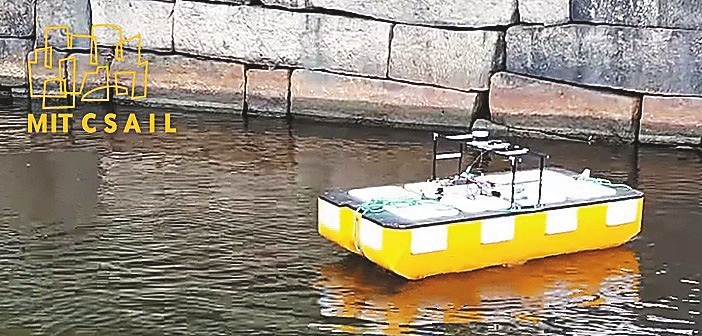
For the last five years, MIT’s Computer Science and Artificial Intelligence Laboratory (CSAIL) and the Senseable City Lab have been working on a fleet of autonomous boats to deploy in Amsterdam. Last year, we saw the autonomous “roboats” that could assemble themselves into a series of floating structures for various uses, and now CSAIL is unveiling the Roboat II. What makes this one particularly notable is that it’s the first that can carry passengers. The boat is pretty small, only two meters long, and can carry two passengers through the canals of Amsterdam. Roboat II has four propellors so it can move in any direction, and also includes LiDAR, GPS and inertial sensors to help it navigate. While an individual boat looks rather tiny, they’re modular, like the original Roboat. This means they can self-assemble into a larger vessel which is commanded by a main “leader” boat. MIT looked at the original Roboat as a “quarter-scale” option, with the Roboat II being half-scale; they’re slowly working up to the point of a full-scale option that can carry four to six passengers. That bigger version is already under construction in Amsterdam, but there’s no word on when it’ll be ready for testing. In the meantime, Roboat II seems like it can effectively navigate Amsterdam. MIT says it autonomously navigated the city’s canals for three hours collecting data and returned to where it left with an error margin of less than 18 centimeters. The MIT team expects to keep improving the Roboat’s algorithms to make it able to deal with the challenges a boat might find, like disturbances from currents and waves. They’re also working to make it more capable of identifying and “understanding” objects it comes across so it can better deal with the environment it’s in. (SD-Agencies) | 
